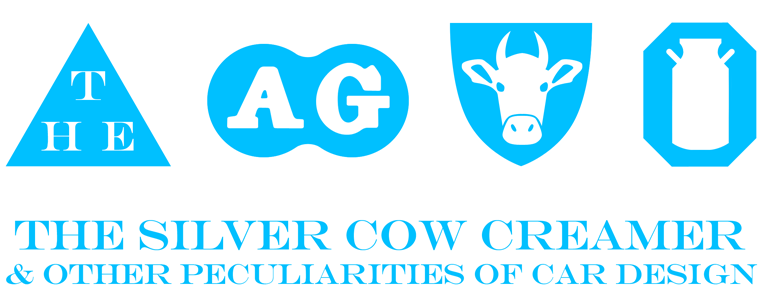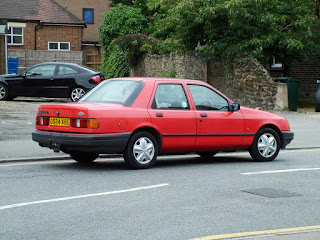 LET IT be known that designing cars is largely a retrospective activity. Only when the competition moves on do we realise the short-comings of our own products and areas for refinement. We rely on marketing to tell us how other cars are perceived by the customer. These, cars that were conceived four or five years ago, used to direct cars that still have another four years to become a reality. By the time a car is launched, the opinions used to forge it are nearly a decade old. Still, when the whole industry does it, no one seems to mind.
LET IT be known that designing cars is largely a retrospective activity. Only when the competition moves on do we realise the short-comings of our own products and areas for refinement. We rely on marketing to tell us how other cars are perceived by the customer. These, cars that were conceived four or five years ago, used to direct cars that still have another four years to become a reality. By the time a car is launched, the opinions used to forge it are nearly a decade old. Still, when the whole industry does it, no one seems to mind.

Tesla slapped the car industry in the face. Soon it will be Apple's turn, if the rumours of an Apple car are to be believed. Tesla staff have been wooed to the big Apple; personnel from Daimler, too. It wouldn't be too far fetched to imagine that Marc Newson's recent appointment to the orchard has something to do with wheels. Newson, of course, was responsible for the superb Ford O21C, a concept developed in tandem with Ford that eschewed the conventions of automotive design language. That Newson is so adept at detail design too makes him the ideal candidate for a product as complex as a car.

So what will it look like? How will it differentiate itself? How will it operate? These are just some of the questions being asked by established car companies as they come to terms with this invisible threat. Even if they knew the answer and what a likely retort might be, implementing it would require another loop of marketing feedback. Knowing, or not knowing, what the Apple car will be is purely abstract: it will invariably be a revolutionary product. It has to be. Apple is under pressure to use its $150billion liquid assets to increase shareholder return.

Aside from the overall form, one of the biggest differences will stem from an idealist design culture conceived under Steve Jobs and Jonathan Ive. They will, I imagine, have dictated what they want, and find a way to make it -a far cry from other companies bound by platform-sharing and marketing appraisal. Volkswagen Group might have a competitor in cut-line quality and flush glazing. The interior is probably a little easier to imagine that the exterior, and one marked change must be interior quality. A comprehensive interface is surely a given, mixing voice, touch, and analogue controls. The analogue will be most interesting; already the Apple Watch shows how a classical form can be reinterpreted in an intuitive manner, and the materials used for the bracelets give some clue at least to the taste, if not the breadth, of the interior fabrics.

With so much talk around the Californian collection, notably Tesla, Google, Faraday Futures and Apple, it is worth mentioning the efforts from Europe. In the smooth-as-a-pebble Citroen C4 Cactus, Citroen has found what must be the most Apple-like car since the Ford O21C concept, while BMWi perseveres with establishing tangible sustainability as a core component by which cars a judged, not to mention the extraordinary powertrains. The Volkswagen Up! is a modern day Giugiaro Fiat Panda that has as much to do with industrial as automotive design.

Then there is the matter of cost. How can smart-phone wielding twenty-somethings on zero-hour contracts make the leap to car ownership? You can expect a new take on vehicle leasing for a start, paying per usage with guaranteed buy-back values so that only the difference between new and used is paid for. Costs will also be saved by the dealership network -alone enough to turn an industry on its head. Forget about showrooms. The car will be the centre-piece in Apple stores (why not suspended behind glass?). Order on-line and they will bring to your house. When something goes wrong, they will replace with a new one, all your customised settings automatically transferred.
There are some things out of Apple's control. Like stone-chips. Like bird-droppings. Like scrapes from a shopping trip. It is one thing protecting your iPhone in a pocket; quite another thing to leave a car at the behest of its surroundings. Much of the appeal of Apple products is that immaculate first impression: expect their cars to feature self-healing paint at the very least. This is expensive, and it will make it very hard for competitors to offer options like this on their own products at a price-point already accepted by the customer.

The biggest question by many is what it will be like to drive. There are three answers to this. First, and most obviously, you won't be doing all the driving, the car will. Autonomy, stupid, provided Apple's legal eagles can get the law to bend their way. Google has: no interface, no lawsuit. Answers two and three depends on how ambitious Apple is willing to be. The conservative answer it that it will drive just fine. Planted, safe, responsive; all those things marketing has divined from public consultation. But this assumes the car behaves only in one way. The third answer I'm hoping for is that the Apple car will feel exactly as you want it to feel. Imagining downloading an app that makes the car feel like a Lotus Cortina. Or a Duesenberg. Or a Cadillac Seville. The better your driving, the more options open up. Cars are already so variable in their dynamic set-up, that imitation of another product is surely only a matter of time, performance limited only by what the powertrain can achieve.

Ah yes, the powertrain. Apple is brilliant at producing products that consume energy; not so hot at providing energy. If Apple really wants to succeed, they must take note from Elon Musk and consider how to cleanly match the energy demand of their cars. Then it becomes a land-grab as corporations buy up acreage to meet demand using wind or solar energy. BMW, it is worth noting, uses energy from a hydroelectric powerstation in its manufacture of i cars for zero carbon footprint.
I suppose the final point is how one product can satisfy a global market of varying road-widths, people-size and preferences. Answer is: there will likley have to be more than one Apple car. A Nano, perhaps? Wait -Tata beat Apple to it. At this rate, Samsung might well do.too.


































